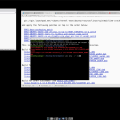Canonical removes Flatpaks from Ubuntu Flavours, Vodophone unveils their 5G Pi-powered femtocell, open-source 3D printed controllers, and 140MiB mini ISO.
Listen:
Subscribe Google Podcasts | Spotify | Apple | Stitcher | TuneIn | RSS | More
Timestamps:
00:00 Intro
02:22 Removing Audacity
04:26 SCALE plugs
07:10 Ubuntu flavours removing Flatpak
28:17 Ubuntu Mini ISO
42:45 Open-source controller review
48:03 5G Raspberry Pi
Colour key: Venn Jill
Remixes no flatpak
https://www.theregister.com/AMP/2023/02/23/ubuntu_remixes_drop_flatpak/
https://discourse.ubuntu.com/t/ubuntu-flavor-packaging-defaults/34061
- The containerized Flatpak format will no longer be available “out-of-the-box” in any of Ubuntu’s official flavors, says Canonical.
- Ubuntu developers have agreed to stop shipping Flatpak, preinstalled Flatpak apps, and any plugins needed to install Flatpak apps through a GUI software tool in the default package set.
- This will be implemented in all eight of Ubuntu’s official flavors in the upcoming Ubuntu 23.04 Lunar Lobster release.
- The other unofficial Ubuntu based distros, like Pop!_OS or Linux Mint will not be affected.
- In my opinion, Pop and Mint are their own distros at this point.
- Unless you consider Ubuntu a Debian spin.
- This does make sense that Canonical wants to keep people in their own ecosystem as default, and not their competitors.
- Closed-source ecosystem.
- Remember kids, the Snap backend is proprietary Canonical code.
- Especially since Flatpaks don’t receive support, bug fixes, and development attention as repo and snap apps do from Ubuntu’s community of developers or Canonical themselves.
- If security was really the issue they would disable support for PPAs.
- Snap supports server apps on machines with no GUI, which Flatpak can’t.
- Clarify. Flatpacks do not require a GUI to run.
- And it’s the only packaging format in Ubuntu Core.
- There are several downsides to having multiple cross-platform packagers installed.
- They don’t understand one another’s dependency mechanisms, which can lead to significant duplication of large packages.
- Whether you use the apt or apt-get commands, none of these will update Flatpak apps.
- Snaps have to be updated separately, and Ubuntu schedules this as a background task by default.
- Flatpak users have to update manually.
- But don’t worry, of course you can run “sudo apt install flatpak” manually and install it as usual.
- Did Microsoft really believe having more than one browser was going to confuse the user?
- Removing Snaps shows Canonical’s lack of faith in Snaps.
- A superior product wins on its own merits.
- That said, I wonder what Canonical did to convince 8 “spins” to universally agree to this.
- I’m going out on a short thick limb here and say it was more than asking nicely.
- With Blue Hat pushing Flatpak and Canonical pushing Snaps what’s a regular use to do?
- Install Arch or and Debian.
- Get away from corporate back / controlled distributions.
Ubuntu Mini
https://www.omgubuntu.co.uk/2023/02/ubuntu-mini-iso-redux
- Ubuntu plans to release a new minimal ISO as part of the upcoming Ubuntu 23.04 Lunar Lobster release.
- The mini ISO should be around 140MiB in size.
- The effort is being headed up by Dan Bungert, the maintainer of Subiquity, which is the tech underpinning Ubuntu’s new Flutter-based installer.
- Canonical’s Lukasz Zemczak explains: “The ubuntu-mini-iso is a small bootable iso that can be either downloaded and used on a CD/USB-drive or even via UEFI HTTP that brings up a dynamic TUI menu of what Ubuntu images you want to download/install to your target system.”
- One thing I wanted to point out is that there have been other mini Ubuntu images floating around over the years, some of which I have tested and do work.
- But this one will be officially supported and tested.
Slice of Pi
Pedro made a thing
https://linuxgamecast.com/2023/02/input-labs-alpakka-the-true-diy-controller/
- Pedro did an excellent review, and I really like his suggestions about moving the scroll wheel closer to the center, and the home button where the LEDs are located so you don’t accidentally hit it.
- I love how Input Labs is focusing on accessibility with its Alpakka controller, and the in development one handed controller Kapybara.
- I am intrigued by using the scroll wheel also, and the size of the controller looks like it would be great for smaller hands like mine.
- Every couple of years Pedro, Jordan, and myself come together and make a review / guide that could pass as professional.
- We got 2023 out of the way early.
- Controllers can be used for all kinds of things unrelated to gaming.
- At least that’s the excuse I’m using to talk about our next story.
- The Alpakka promises the performance of a mouse combined with the convenience of a gamepad all while being completely open-source.
- Powered by a Raspberry Pi Pico this 3D printed herbivore packs dual gyros, touch-sensitive surfaces, and a scroll wheel.
- It’s not wireless and Pedro was not a fan on the USB mini connector.
5G Pie
- Vodafone wrote an entire article about a femtocell without using that word a single time.
- Anyway, this is the reason you can’t get a raspi in 2023, 2022, 2021, 2020…
- Well not this exactly, but the decision to prioritise supply to corporations vs hobbyists/education.
- We can complain about RPIs or go support something else.
- Wow, that will require the Raspberry Pi Foundation to ramp up supply of the RasPi 4s!
- Vodafone aims to make 5G-based mobile private networks (MPNs) more accessible to the 22 million small-and-medium-sized enterprises across Europe.
- This can also be used for extended 5G coverage in the household.











